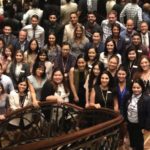Indigenizing post-secondary education in BC
2018 Intercultural Symposium session explores how classrooms, institutions, and faculty can support the indigenization of post-secondary schools and institutions
What can British Columbia’s post-secondary schools and institutions do better when it comes to supporting indigenization? Aurelia Kinslow, Indigenous Curriculum Consultant at Langara College, says a lot of work still needs to be done at every level, from leadership to staff. “I think there needs to be a more concerted effort in institutions to make a stronger commitment to support indigenization efforts,” says Kinslow, who came to BC as an international and indigenous student from the United States.
Kinslow recently co-presented a workshop at BCCIE’s 2018 Intercultural Symposium, a full-day event that focused on the 4 I’s: indigenization, inclusivity, interculturalization, and internationalization, and how they intertwine in the province’s classrooms and institutions.
Kinslow says that when she arrived at UBC as a PhD student the university’s First Nations Longhouse offered an environment on campus that made her feel the most welcomed. The Longhouse, which opened in 1993, has “inspired a lot of post-secondary institutions to think about a central hub of services that can welcome indigenous students and offer them a home away from home,” says Kinslow. The building reflects the architectural traditions of the Northwest Coast and operates as a venue for programming and services for indigenous students, the university, and the wider community.
“Institutions need to think beyond a standard checklist when it comes to making both international and indigenous students feel accepted. They need to be fostering opportunities that create friendships and learning outside of the classroom,” says Kinslow, citing Dr. Shauneen Pete’s 100 Ways: Indigenizing & Decolonizing Academic Programs, as an excellent launching pad for ideas.
Creating mandatory courses on Indigenous Education for staff as they onboard, hiring indigenous faculty in a manner that’s proportional to the number of indigenous people in the population, and creating standards and policies to better retain indigenous faculty are some ideas currently being discussed when it comes to indigenizing post-secondary education.
“Indigenous scholars like Pete are proposing ideas that could mean outstanding possibilities for B.C.’s schools and institutions to support indigenization efforts,” concludes Kinslow. “What’s required now is for the leadership within our institutions to champion indigenization efforts in a genuine and sustained manner at all levels, from policy, to student services, to recruitment efforts from students to upper administrative levels.”



